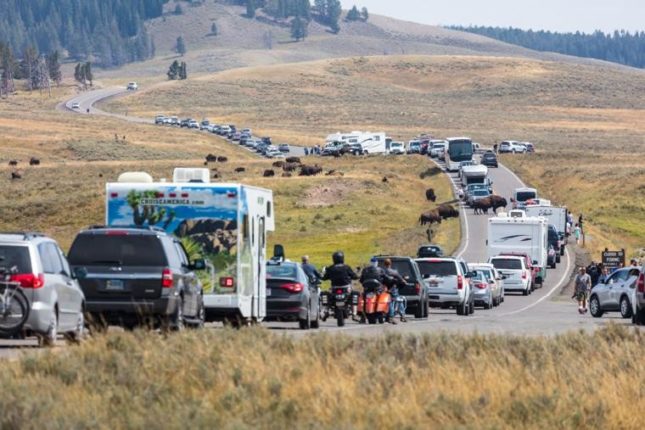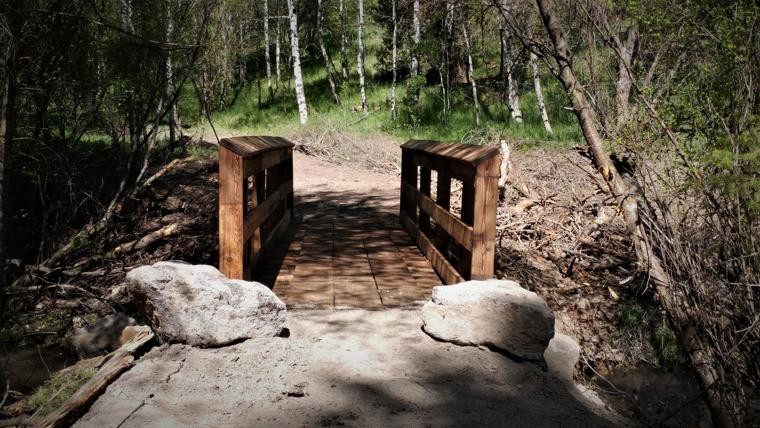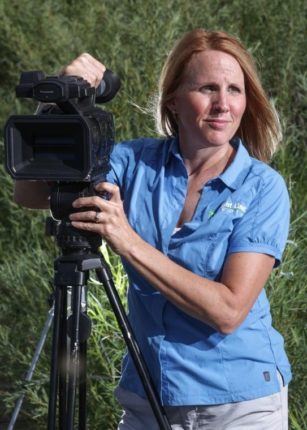East Idaho biologists want wolverines to shed a bit of hair and grin for the camera in the name of science.
Idaho Department of Fish and Game biologists in the Upper Snake River Region recently began placing 10 camera traps in the Island Park area and two elsewhere, along with scent dispensers designed to attract wolverines passing through. The main idea is to see how many of the elusive creatures frequent the region.
“They have a really wide range,” said James Brower, regional communications manager for Fish and Game. Brower helped install one of the Island Park traps. “The bottom line is that we don’t know (how many wolverines there are). That’s what this whole study is about.”
Brower said if wolverines are found in the area, the next step would be to capture and collar them to get a better idea of the animal’s distribution.
Besides taking photos, the tree-hung bait traps also have copper bristles attached below the scent traps to catch hair samples.
“So if an animal crawls up and down it snags a little bit of hair off of it,” Brower said. “Potentially we can get some DNA from that if we can get enough hair samples. We can see if they are different individuals or if they are related. It goes into a database that gives us tons of information.”
The scent used in the traps is a mixture of skunk essence, beaver castor and anise, and “some other really good smelly stuff,” he said.
The odor is dripped out of a mechanical, battery-operated dispenser intended to run all winter long.
“In the trapping world, anything that smells funky attracts all sorts of critters,” Brower said. “We have found cases where deer and elk will come to check them out. Everything that loves to eat meat will come to investigate what the heck went on over there.”
Wolverines are the largest land-dwelling member of the weasel family with males weighing up to 50 pounds and females, 26 pounds. The critter lives in high mountain regions close to the tree line where snow cover persists well into May or even June. Wolverines prefer to den in the snow.
Recent estimates peg wolverine numbers in the lower 48 states at 250 to 300. Canada is believed to have 15,000 to 20,000.
“The wolverine is basically a relic of the ice age, and it still persists where ice-age conditions persist,” said Tim Preso on his Earthjustice website. He’s an attorney for Earthjustice, which supports federal protections for wolverines. “Wolverines are extremely tough and they live in extremely harsh environments at high elevation. Mostly they’re up on those high ridges and they’re up there year-round. So when grizzly bears, which we think of as a tough animal, are sleeping in their hibernation dens for the winter, the wolverine is still out there on those snow-blasted slopes trying to eke out a living.”
One thing wolverines are renowned for is their giant home territory.
“They are heavily snow-dependent for their breeding success,” Brower said. “They have to have a whole lot of snow. They are built for wintertime. They’ve got huge pads on their feet that will allow them to really move on top of the snow. They are movers and shakers. They never stop. They are just hauling all the time. They have really wide home ranges.”
Some estimates put wolverine home ranges at 160 square miles.
Brower said Fish and Game plans to continue the study into to future.
“We may also see other critters (in the camera traps) as well,” he said. “It’s always useful information.”







